Bogotá, Colombia’s vibrant and edgy capital, offers a fascinating mix of history, culture, and modern innovation. Its architecture reflects centuries of evolution, from its colonial roots to contemporary skyscrapers. Whether you’re an architecture lover or a budget-conscious backpacker, Bogotá’s unique buildings provide an exciting way to explore the city. From grand churches and plazas to modern marvels, Bogotá's architecture tells the story of the city’s growth, resilience, and cultural heritage.
For backpackers, Bogotá is a fantastic destination, with most of its architectural wonders easily accessible on foot or via affordable public transportation. Many of the city's most significant buildings are concentrated in its historical centre, La Candelaria, allowing travellers to dive deep into the city’s past without breaking the bank. On the other hand, architecture enthusiasts will revel in the city’s diversity, from colonial-era masterpieces to cutting-edge modern structures.
In this guide, we’ll explore the top 10 architectural landmarks in Bogotá, providing details on each building’s history, the architect behind it, and why it’s worth visiting. Whether you’re looking for photo opportunities, historical insights, or simply want to experience Bogotá’s vibrant atmosphere, this guide to Bogota architecture will enrich your journey through the city.
Bogota Architecture No.1 to No.5
No.1. Plaza de Bolívar
Year of Construction: The square was established in the 16th century.
Built by: Spanish colonial authorities.
Architect: While no specific architect is credited for the original layout, the plaza has evolved over time, with surrounding buildings designed by various notable architects.
Purpose: Originally designed as the city's political and social center, the plaza continues to serve as a gathering place for cultural and political events.
Why it's special: The Plaza de Bolívar is Bogotá's most important historical square, often regarded as the heart of the city. This grand public space is surrounded by several key landmarks, including the Cathedral Primada de Colombia, Palacio de Justicia, Liévano Palace, and National Capitol, each reflecting different periods of Colombia’s architectural and political history. The statue of Simón Bolívar, erected in 1846, adds to the historical significance.
For backpackers, the plaza offers an excellent starting point to explore Bogotá’s most iconic buildings. Architecture lovers will appreciate the contrast between the colonial, neoclassical, and modern architectural styles on display. The square is also an important cultural space, hosting festivals, protests, and public events, making it a lively spot to visit any time of the year.
What to explore: Walk around the square to appreciate the surrounding architecture. The Cathedral Primada and the National Capitol stand out for their grandeur and historical significance. Don’t miss the street vendors and lively atmosphere, making this a must-visit for any traveler in Bogotá.
No.2. Catedral Primada de Colombia (Bogotá Cathedral)
Year of Construction: Built between 1807 and 1823.
Built by: Commissioned by the Catholic Church.
Architect: Spanish architect Domingo de Petrés.
Purpose: Constructed as the main Catholic cathedral for the city of Bogotá.
Why it's special: The Catedral Primada de Colombia is a monumental piece of neoclassical architecture, making it one of Bogotá’s most significant religious and historical landmarks. Located in the Plaza de Bolívar, it is not only the largest church in Colombia but also holds great cultural and religious importance. The cathedral has witnessed countless political and religious events, making it a key player in Colombia’s history.
The structure’s grand neoclassical facade, with its towering columns and elegant symmetry, contrasts beautifully with the surrounding buildings. Inside, the cathedral boasts several impressive chapels, altars, and religious artworks that highlight its significance in Colombia’s Catholic heritage.
What to explore: Architecture enthusiasts will love the detailed neoclassical design, while backpackers can appreciate the calm atmosphere inside the cathedral. Take a moment to admire the altar, the dome, and the religious art displayed throughout. The cathedral is a peaceful escape in the midst of Bogotá’s bustling centre, offering a glimpse into the city’s spiritual and architectural history.
No.3. Museo del Oro (Gold Museum)

Year of Construction: The museum was established in 1939, with the current building constructed in the 1960s and renovated in 2004.
Built by: The original museum collection was created by the Bank of the Republic of Colombia.
Architect: Germán Samper.
Purpose: Built to house Colombia’s most extensive collection of pre-Columbian gold artefacts.
Why it's special: The Museo del Oro is one of Bogotá’s most famous attractions and houses over 55,000 pieces of gold, making it the largest collection of gold artefacts in the world. The building itself, a prime example of modernist architecture, perfectly complements the ancient treasures it contains. Architect Germán Samper designed the building with clean lines and open spaces, allowing the focus to remain on the artefacts inside.
Visitors can explore exhibits showcasing the craftsmanship of Colombia’s indigenous civilisations, with intricate gold sculptures, jewelry, and ceremonial items. The museum is a fascinating stop for history buffs, while architecture lovers will enjoy the sleek, modern design.
What to explore: Take your time browsing through the impressive collections on display. The museum’s modernist design and its contrast with the ancient gold artefacts provide a unique juxtaposition. Backpackers will find this a budget-friendly cultural experience, while architecture enthusiasts will appreciate the building's elegant design.
No.4. Casa de Nariño (Presidential Palace)
Year of Construction: Built between 1906 and 1908.
Built by: The Government of Colombia.
Architect: French architect Gaston Lelarge and Colombian architect Julián Lombana.
Purpose: Built as the official residence and workplace of the president of Colombia.
Why it's special: The Casa de Nariño, or Presidential Palace, is one of Bogotá’s finest examples of French Neoclassical architecture. Located near the Plaza de Bolívar, it serves as the political heart of Colombia. Its elegant facade, complete with grand columns, detailed cornices, and sweeping staircases, reflects the power and prestige of the Colombian government.
Though the building itself is closed to the public, the Casa de Nariño gardens and nearby historic streets are open to visitors. The presidential palace is an architectural symbol of Colombian politics, offering an insight into the city’s Republican-era architecture.
What to explore: While you may not be able to tour the palace itself, the beautifully maintained gardens are worth a visit. The grand exterior, combined with the surrounding historical district, makes this a perfect stop for architecture lovers and curious backpackers.
No.5. Colpatria Tower
Year of Construction: Completed in 1979.
Built by: Colpatria Corporation.
Architect: Obregón and Valenzuela.
Purpose: Built as a commercial skyscraper.
Why it's special: The Colpatria Tower stands at 196 meters (643 feet) and is Bogotá’s tallest building. Its height makes it one of the most iconic elements of Bogotá’s skyline, offering visitors panoramic views of the city. As one of the first modern skyscrapers in Bogotá, it marks the city’s urban and economic development.
The building’s design, while simple, makes a bold statement against the backdrop of Bogotá’s historic districts. Its observation deck on the 48th floor provides one of the best vantage points to see the city and the surrounding Andes mountains.
What to explore: For backpackers, the observation deck offers a budget-friendly way to see Bogotá from above, while architecture lovers will appreciate the building’s role in the city’s modern development. The tower is also lit up at night, making it a stunning visual landmark in Bogotá’s urban landscape.
Top 10 Buildings in Bogota No.6 to No.10
No.6. Teatro Colón (Colón Theatre)
Year of Construction: Built between 1885 and 1892.
Built by: Commissioned by the Colombian government.
Architect: Italian architect Pietro Cantini.
Purpose: Built as a national theatre for opera, ballet, and classical music performances.
Why it's special: The Teatro Colón is a masterpiece of neoclassical architecture and one of the most beautiful theatres in Latin America. Its opulent interior, complete with marble staircases, intricate frescoes, and gilded decorations, transports visitors to the grandeur of 19th-century theatre design. The theater was designed by the Italian architect Pietro Cantini, and its inspiration came from European opera houses, giving Bogotá a cultural landmark of international stature.
*TOP TIP: For backpackers, this is a budget-friendly cultural experience, as tickets to performances are often affordable. Architecture lovers will be captivated by the neoclassical design and the exquisite details that make the Teatro Colón a must-visit site in Bogotá.
What to explore: Take a guided tour to explore the grand interiors, including the orchestra pit, stage, and private boxes. If you have the chance, catch a live performance to fully appreciate the acoustics and ambiance. Whether you’re here for the architecture or the art, the Teatro Colón offers a glimpse into Bogotá’s cultural history and artistic heritage.
No.7. Iglesia de San Francisco
Year of Construction: Built between 1557 and 1621.
Built by: The Franciscan Order.
Architect: Unknown.
Purpose: Built as a Catholic church during Bogotá's early colonial period.
Why it's special: The Iglesia de San Francisco is the oldest surviving church in Bogotá, and its history is intricately linked to the city’s Spanish colonial past. This church’s austere exterior, built from stone, hides an incredibly ornate Baroque interior that is considered one of the finest examples of religious art in Colombia. The lavish golden altar inside is a true masterpiece and one of the most significant pieces of Baroque art in the country.
As the oldest religious site in the city, it provides a fascinating contrast between Bogotá’s colonial roots and modern-day development. Backpackers will find its central location in La Candelaria ideal for exploring other nearby attractions, while architecture lovers will appreciate the combination of Baroque and Renaissance elements that make this church unique.
What to explore: Take time to admire the intricate gold leaf details on the altar, as well as the religious artwork that fills the interior. Visitors will be struck by the contrast between the church’s relatively simple facade and its opulent interior, making it an essential stop for anyone interested in Bogotá’s religious and architectural history.
No.8. Torre Bacatá
Year of Construction: Completed in 2016.
Built by: BD Bacatá Construction Group.
Architect: Luis F. Herrera and Eduardo Meyer.
Purpose: Mixed-use skyscraper with residential, office, and commercial spaces.
Why it's special: The Torre BD Bacatá represents Bogotá’s leap into modernity, standing at 260 meters tall and currently the tallest building in Colombia. Its sleek glass and steel facade makes it one of the city’s most significant examples of contemporary architecture. This two-tower complex includes residential, office, and retail spaces, making it a symbol of Bogotá’s rapid urban development.
For architecture lovers, the Torre BD Bacatá is an example of innovative design, blending sustainability with cutting-edge technology. Backpackers can enjoy the building’s commercial spaces or simply marvel at the structure’s impact on Bogotá’s evolving skyline.
What to explore: While primarily a commercial building, the ground floors offer shops and cafes, making it an accessible stop for travelers. The tower is a symbol of Bogotá’s future, and architecture enthusiasts will appreciate how this building has redefined the city’s skyline.
No. 9. National Museum of Colombia (Museo Nacional)
Year of Construction: Built in 1823.
Built by: Commissioned by the Colombian government.
Architect: Danish architect Thomas Reed.
Purpose: Originally designed as a prison, it was transformed into the National Museum in 1948.
Why it's special: The National Museum of Colombia is one of the oldest museums in the Americas and showcases the country's rich cultural and historical heritage. The building itself is a work of historical architecture, designed as a panopticon prison in 1823 by Danish architect Thomas Reed. Its fortress-like structure, with thick stone walls and small windows, was transformed into a museum that now houses thousands of artifacts, artworks, and historical objects.
For backpackers, this museum offers a low-cost opportunity to dive deep into Colombian history, from pre-Columbian times to modern-day art. Architecture lovers will be fascinated by the building’s transformation from a prison into a cultural institution, offering an interesting story in itself.
What to explore: Inside, visitors can explore galleries featuring everything from ancient artifacts to modern art. The building’s architecture still retains elements of its original prison design, making it a unique structure to explore both for its cultural content and its historical design.
No.10. Santuario de Monserrate
Year of Construction: The church was completed in 1925, but the site has been a pilgrimage location since the 17th century.
Built by: Bogotá architects Arturo Jaramillo Concha and Arturo Robledo.
Purpose: A Catholic pilgrimage site located on top of Monserrate Hill.
Why it's special: The Santuario de Monserrate, perched at 3,152 meters above sea level, is both a religious and architectural wonder. The site has been a place of pilgrimage since the 17th century, but the current church was built in 1925, designed by architects Arturo Jaramillo Concha and Arturo Robledo. Its white facade, set against the backdrop of the Andes, makes it one of Bogotá’s most recognizable landmarks.
Reaching Monserrate can be an adventure in itself, with options to hike up the steep path or take a funicular or cable car. Once at the top, visitors are treated to breathtaking views of Bogotá below and the surrounding mountains. For backpackers, this is a great outdoor activity with a rewarding view at the summit, while architecture lovers will appreciate the church’s design and historical significance.
What to explore: Explore the church and its surroundings, and enjoy the panoramic views from the top. Whether you're interested in the architecture or simply want to experience Bogotá’s most famous lookout point, Monserrate is a highlight for any traveler.
Top 10 Buildings in Bogota Map
BONUS - Plazoleta del Chorro de Quevedo

The Plazoleta del Chorro de Quevedo is a vibrant and historic square located in the heart of La Candelaria, Bogotá’s oldest neighborhood and perhaps one of its coolest. This small plaza is believed to be the site where Bogotá was founded by Gonzalo Jiménez de Quesada in 1538. Today, it serves as a cultural hub, filled with street performers, local artists, and musicians, creating a lively and bohemian atmosphere. The narrow streets surrounding the square are lined with colourful colonial houses, cafés, and artisan shops, making it a perfect spot for backpackers to soak in Bogotá’s rich history and contemporary street culture.
For backpackers, Chorro de Quevedo is a must-visit due to its affordability, charm, and central location. It's a great place to experience Bogotá's local vibe, meet other travelers, and enjoy the city’s artistic spirit. The area’s historical significance, combined with its vibrant, modern-day character, makes it an essential stop for anyone exploring Bogotá.
Top 10 Buildings in Bogota Final Thoughts
Bogotá’s architectural marvels showcase the city’s rich cultural heritage and its dynamic future. From colonial churches to cutting-edge skyscrapers, the city offers a fascinating blend of historical and modern design, making it an ideal destination for both backpackers and architecture lovers. These buildings, each with their own unique stories, provide a deeper understanding of Bogotá’s complex history and vibrant present.
Whether you’re looking to explore grand plazas, walk through ancient cathedrals, or marvel at modern skyscrapers, Bogotá has something to offer for every type of traveller. As you plan your trip, be sure to include these top 10 architectural landmarks in your itinerary to experience the true essence of Bogotá.
Are you ready to explore the architectural wonders of Bogotá? Whether you’re a backpacker on a budget or an architecture lover seeking cultural experiences, these landmarks will enrich your visit to Colombia’s vibrant capital. Start planning your trip now and immerse yourself in the beauty and history of Bogotá's stunning architecture. For more travel tips and guides, follow us for updates and inspiration on your next adventure!

For the curious explorer












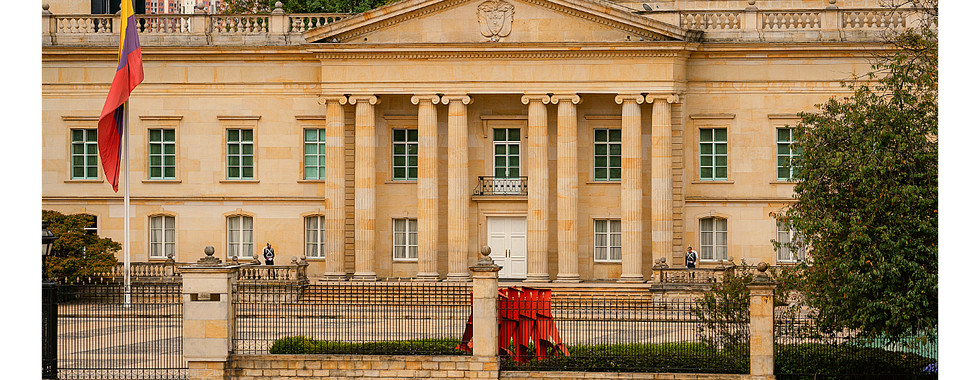





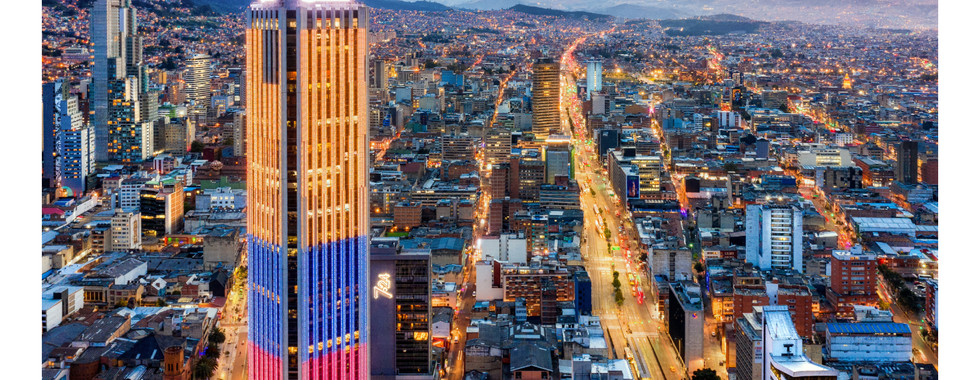





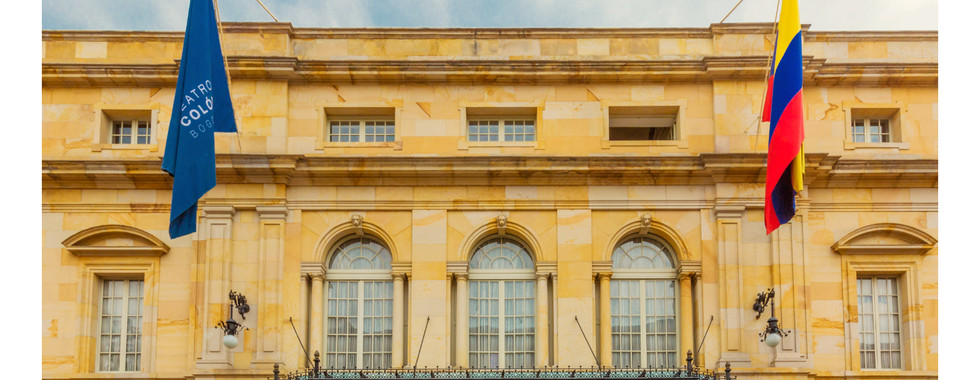









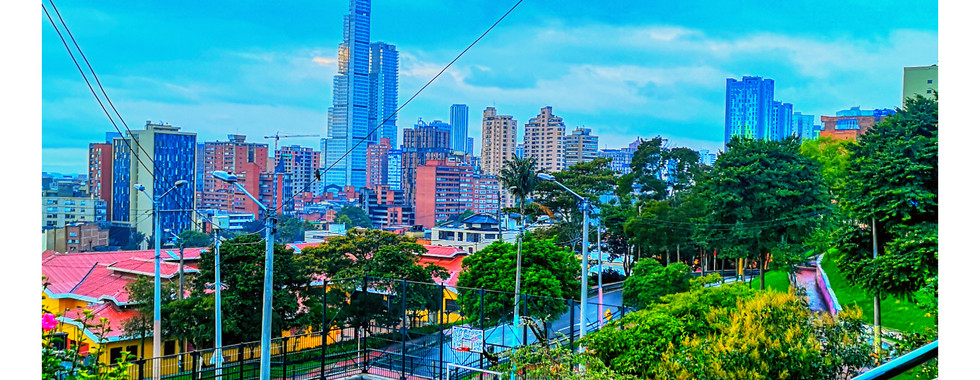







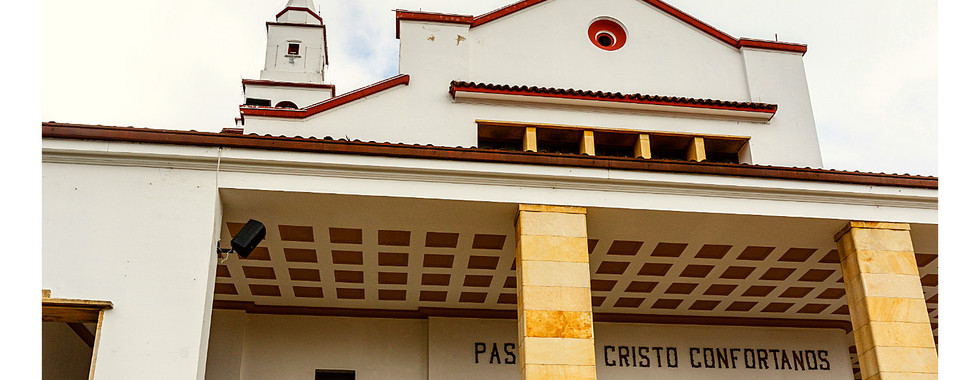

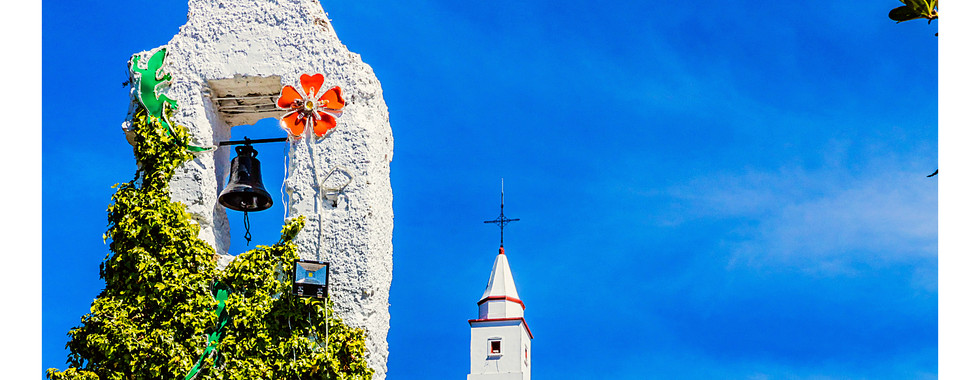
Comments